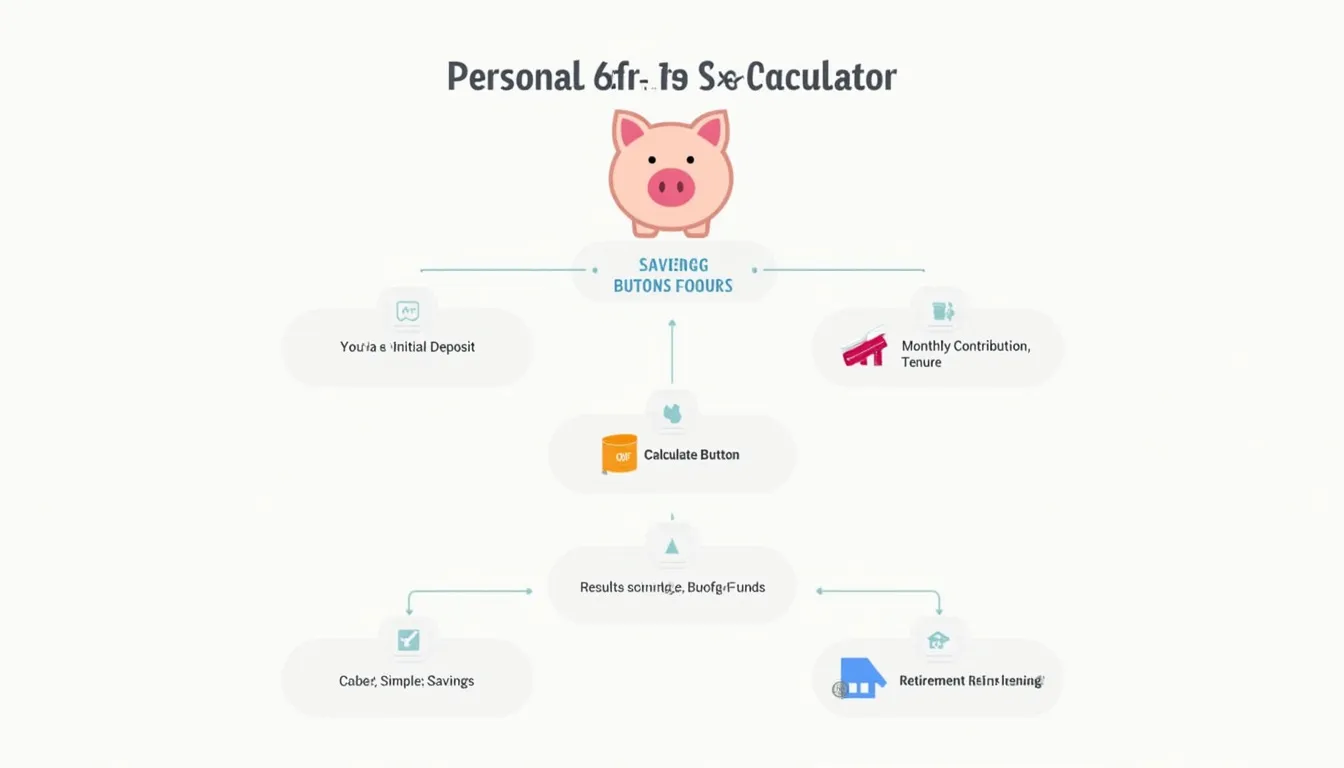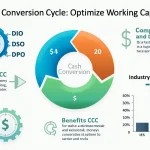Personal Savings Calculator
Is this tool helpful?
How to use the tool
- Initial Deposit – Enter the cash you already have.
Example inputs: $2,000 or $12,750. - Monthly Contribution – Type the amount you can add each month.
Example inputs: $300 or $950. - Tenure (Years) – Set how long you will keep saving.
Example inputs: 4 years or 8.5 years. - Press Calculate; the tool returns your total savings.
Formula used
Every result comes from
$$ \text{Total Saved}= \text{Initial Deposit} + (\text{Monthly Contribution} rac{ 12 }{ 1 }\times \text{Tenure in Years}) $$Worked examples
- Example 1: $2,000 start, $300 each month, 4 years ⇒ Total = $2,000 + ($300 × 12 × 4) = $16,400.
- Example 2: $7,200 start, $650 each month, 8 years ⇒ Total = $7,200 + ($650 × 12 × 8) = $69,600.
Quick-Facts
- Emergency funds should cover 3–6 months of expenses (FINRA, 2023).
- The median unexpected expense in the U.S. is $1,400 (Federal Reserve, 2023).
- Standard home-loan down payment benchmark: 20 % of price (CFPB, 2022).
- FDIC insurance protects up to $250,000 per depositor, per bank (FDIC.gov, 2024).
FAQs
What does this calculator do?
It totals your starting balance with all future monthly deposits to show the cash you will hold at the end of the chosen period.
How is the result calculated?
The tool multiplies your monthly contribution by 12, multiplies by the tenure in years, then adds your initial deposit.
Does it account for interest?
No. It provides a principal-only view, useful for zero-risk targets or when you want to ignore uncertain returns.
How often should I update my numbers?
Review every 6–12 months to match changes in income or goals (Investopedia, 2023).
What if I save bi-weekly instead?
Convert your bi-weekly amount to a monthly figure by multiplying by 26 and dividing by 12 to keep the math accurate.
Any expert tip for sticking to the plan?
“Automated transfers are one of the easiest ways to build savings” (CFPB, 2022).
Important Disclaimer
The calculations, results, and content provided by our tools are not guaranteed to be accurate, complete, or reliable. Users are responsible for verifying and interpreting the results. Our content and tools may contain errors, biases, or inconsistencies. We reserve the right to save inputs and outputs from our tools for the purposes of error debugging, bias identification, and performance improvement. External companies providing AI models used in our tools may also save and process data in accordance with their own policies. By using our tools, you consent to this data collection and processing. We reserve the right to limit the usage of our tools based on current usability factors. By using our tools, you acknowledge that you have read, understood, and agreed to this disclaimer. You accept the inherent risks and limitations associated with the use of our tools and services.







